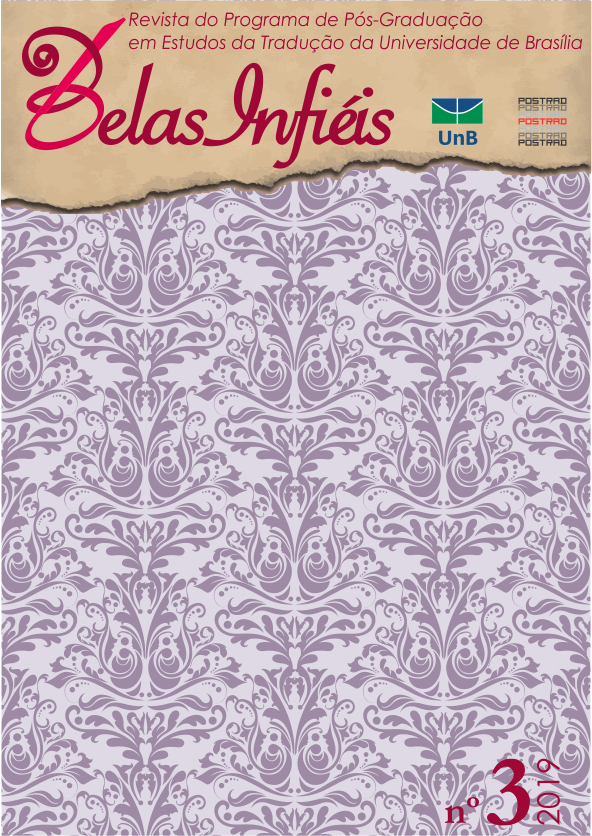Commented Translation of the Tale “Petrosinella” by Giambattista Basile
DOI:
https://doi.org/10.26512/belasinfieis.v8.n3.2019.23056Keywords:
Italian Literature. Children’s literature. Wonder tale. Rapunzel. Giambattista Basile.Abstract
This is a literary translation of the fairy tale “Petrosinella”, present in the book Lo cunto de li cunti ovvero lo trattenemiento de peccerille (The tale of the tales or the entertainment of the little boys), also called Pentamerone ossia la fiaba delle fiabe, that is, the fable of the fables. The book is considered the masterpiece of Italian writer Giambattista Basile, who was born in Naples and lived between 1575 and 1632. Lo cunto de li cunti is an anthology composed of forty-nine wonder tales narrated during five days or journeys and framed by a narrative that is also a wonder tale, totaling fifty tales that are articulated to compose the work. This collection was published posthumously and originally in Neapolitan dialect, a language spoken in the southern part of Italy, in the Naples region, which made it difficult to disseminate Basile’s work in the rest of the peninsula and in Europe because of the linguistic restriction associated with the dialect. Thus, the masterpiece of the Neapolitan author remained, for a long time, unknown to the literary public in general. It was only in 1925 that the work was translated to standard Italian, and was given the name Pentamerone, title attributed by the philosopher and literary critic Benedetto Croce, who made this translation alluding to the narrative structure employed in Giovanni Boccaccio's Decamerone. However, even before the Italians in general had had contact with the work, the German librarians, writers and philologists Jacob and Wilhelm Grimm had access to it through their friend Clemens Brentano (of Italian family). This led to the translation of the work to the German language, in 1846, by Felix Liebrecht, to which the Grimm brothers wrote a foreword. As a result of this data, attested by researcher Andrea Lombardi (2015), and the confluence between their plots, it is possible to affirm that “Petrosinella”, the first wonder tale narrated in the second day of the Pentamerone, can be the source text of Rapunzel. The latter is a well-known fairy tale by the Grimm version, which bequeathed to Children’s Literature and to the popular imagination the figure of the famous character of very long hair, reclusive for many years in a high tower. In other words, the character “tower maiden”, form by which the beautiful Rapunzel is identified by folklorists. Thereby, we come to the conclusion that Basile’s contribution to the birth of children’s literature is undeniable. In this sense, in order to broaden the scope of European authors studied in this field of research in our country, we believe it is relevant to suggest to the Brazilian public the reading of the children’s version of the story in Italian, now translated into Portuguese and accompanied by explanatory notes on issues involving cultural and translational aspects. The intention is both to promote a reading in Portuguese and to contribute to Basile’s work recognition in Brazil.
Downloads
Downloads
Published
How to Cite
Issue
Section
License
Given the public access to this journal, the texts are free to use but requires the recognition of the original authorship and initial publication in this journal to be properly stated.
 The journal allows the use of works published for non-commercial purposes, including the right to submit the work to publicly accessible databases. Published contributions are the sole and exclusive responsibility of the author(s).Â



















